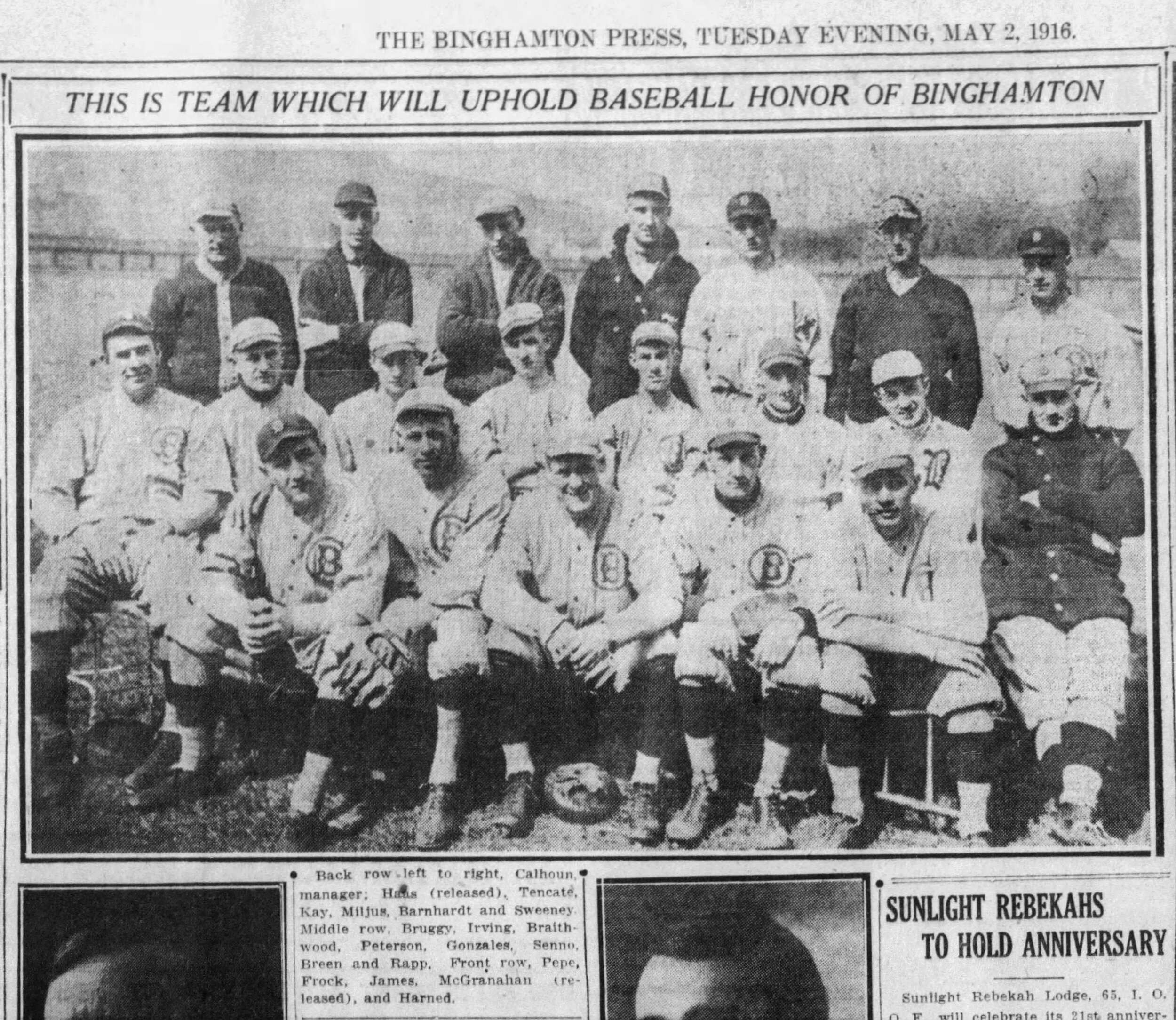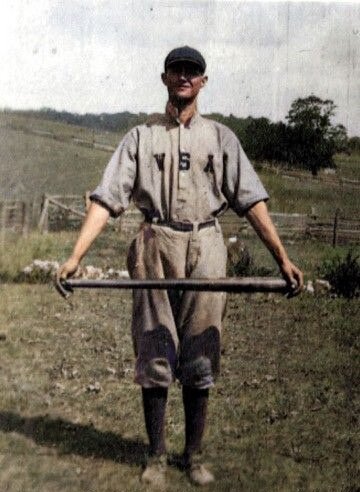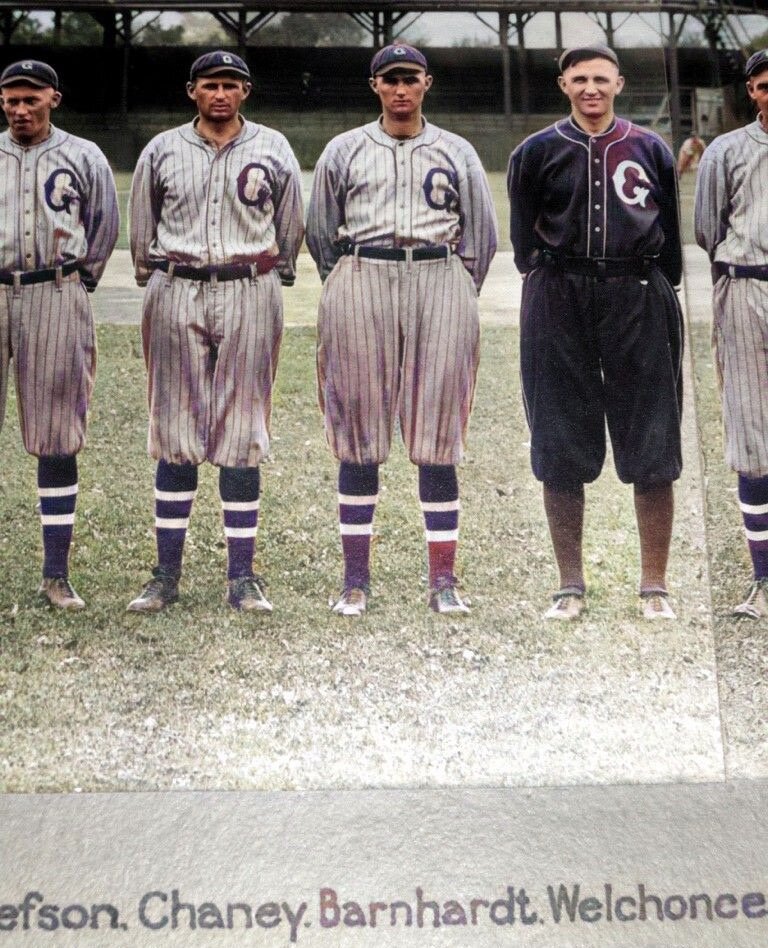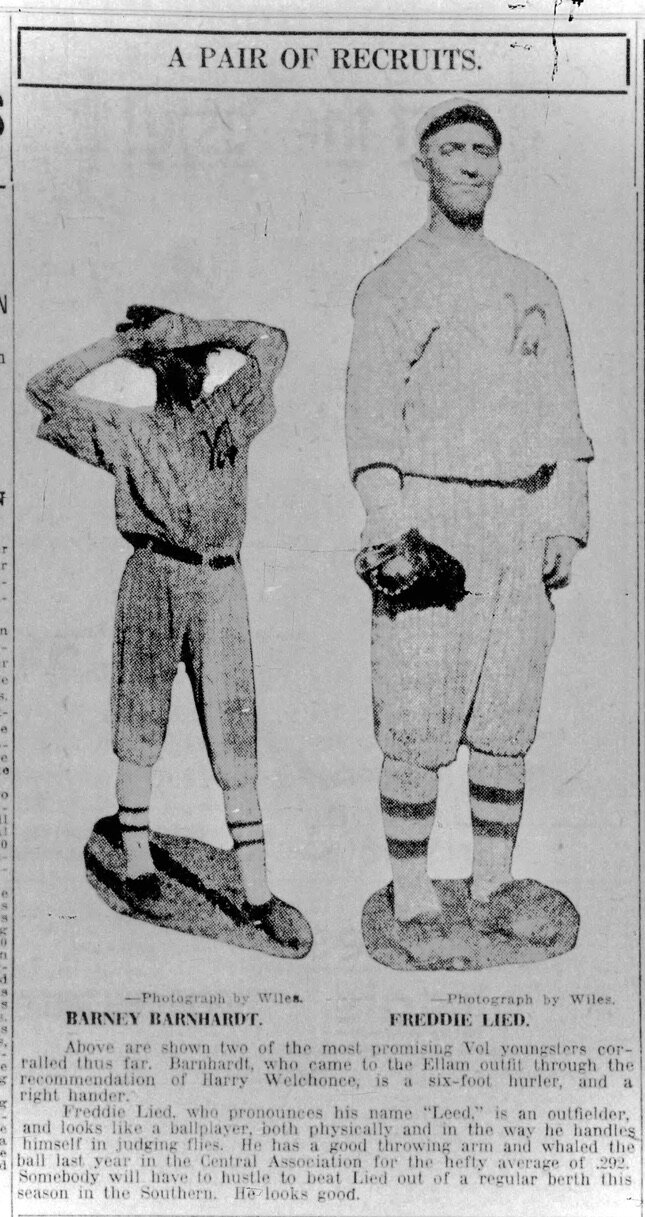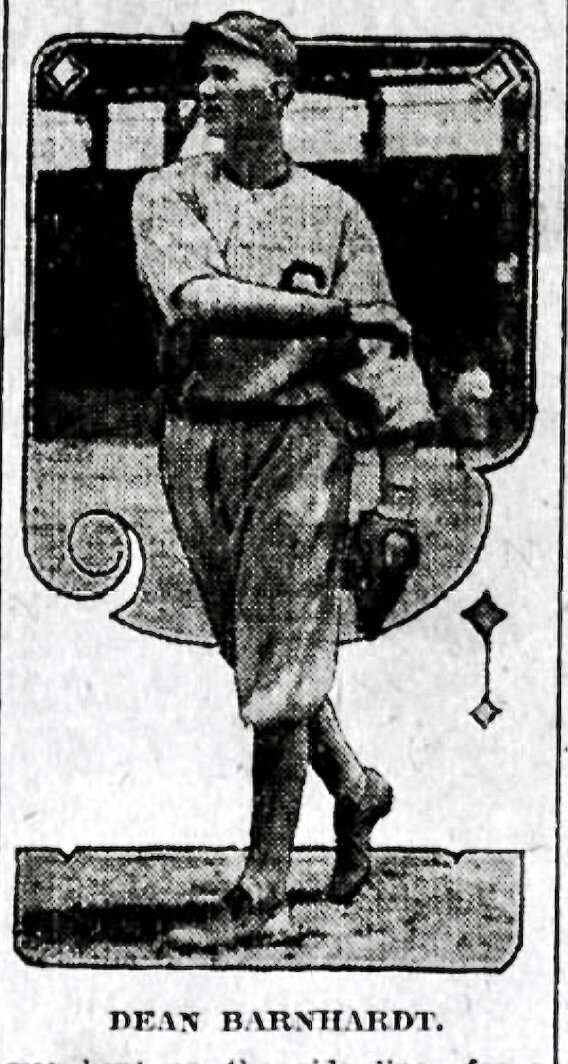BLOG: Here’s a collection of research undertaken by BearTough Research
“BUGS” BARNHARDT BASEBALL BIOGRAPHY
Deane D. Barnhardt grew up in the oil-boom of the early 1900s, when Butler County was a hotbed of oil production. As the increasing demand for oil sprang up as a result of the newly invented combustion engine, the boomtowns around western Pennsylvania witnessed many young men working in the oilfields. Deane, however, seems to have been gifted with the ability to not dig holes into the Earth in search of ancient fossilized plants to burn, but rather he could throw a baseball sixty feet, six inches and strike out opposing hitters. Some time in his youth, however, he twice broke his lower right arm. Consequently, once it healed, he was unable to effectively throw a baseball overhand like most, so he instead resorted to a sidearm or underhand pitching delivery. This unconventional pitching method likely helped him to sustain success later in life when he joined the professional baseball leagues, since very few players pitched underhand (his pitching style was often compared to Carl Mays of the New York Giants).
After an impressive college baseball career, Deane first played in western Pennsylvania’s independent leagues before winding up in the more organized (and paid) New York State League in 1916 and 1917 with the Binghamton Bingoes (1916-17), before moving on to the Syracuse Stars in 1918. During his time in Binghamton, he met and eventually married Hazel Mann when they were both 22. The young couple likely faced marital strains as Deane soon left Binghamton for a brief stint in the Southern Association League in Nashville, and then in Syracuse.
1916 Binghamton Bingoes
1916 Binghamton Bingoes — Suited up in their finest
1917 Binghamton Bingoes
When the 1919 season unfolded, and the Syracuse baseball relocated to Reading, Pennsylvania, Deane was one of a handful of players to make the move to the Keystone State for the new franchise in the reconfigured International League – the highest level of minor leagues at the time and the staging ground for recruiting new talent into the Major Leagues. Meanwhile, Deane and Hazel’s marriage hit a dead-end by 1920 and the couple divorced after just three years of marriage. His stay with Reading was one of his longest, lasting for 2.5 seasons (1919-1921). He had strong seasons with the team and was regarded as one of the city’s most popular players in history.
1921 Reading Aces (Deane is in the back-row, fifth from the right with arms crossed)
After struggling through some injuries, however, a mid-season trade in the 1921 season put him back on the move, this time joining the rival Newark Bears. He stayed in Newark for the remainder of the 1921 season, and all of the ’22 season. At the start of the 1923 season, he was again traded, this time to the cross-city rivals – the Jersey City Skeeters.
He would spend 1923, 1924 and part of 1925 in New Jersey, but the lowly play of Jersey City team led to some of his worse seasons. Despite the team’s weak performance team, Deane’s close proximity to Manhattan during the roaring 20s was likely a great time of amusement as the city underwent a building boom and economic surge. Notwithstanding the Big Apple’s excitement, Deane suffered a dreadful 1924 season, allowing the most runs of any pitcher in the International League and suffering 25 losses while only winning 9. His troubles continued into the 1925 season, and after missing most of spring training due to an injury and the death of his father John, he got off to a poor start with Jersey City. He likely had not recovered from the injury suffered in the spring. Jersey City released him in May 1925. He latched on briefly with the independent Cressona Tigers and Lehighton team but failed to perform well (likely still injured).
Given his troubles in the 1924 and 1925 seasons, Deane may have sensed his pitching days were number and did not play in 1926. During 1926 however, Deane remarried to Elsie Miriam Walker, a native of Reading, Pennsylvania who was five years Deane’s junior. Deane did make a comeback in 1927, playing at least six games with New Haven, a team in the low minor leagues. He again did not play in 1928. Back in Reading in 1929, he attempted a comeback with Reading, but it was unsuccessful, and he officially retired thereafter.
Left-to-Right: Deane circa 1912 in the West Sunbury Academy uniform; circa 1914 in Greenville uniform; 1918 Nashville Vols; 1920 Reading Marines
For the full 30+ page booklet on Bugs Barnhardt’s Baseball Biography, write to dan@beartoughresearch.com
